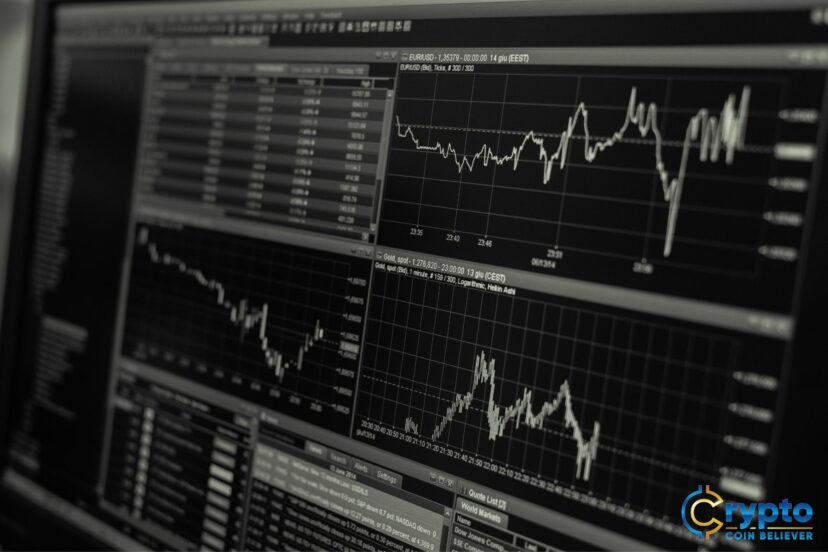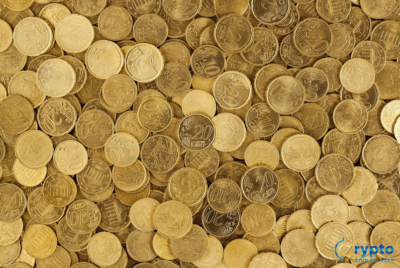In recent years, the world of cryptocurrencies has experienced tremendous growth in popularity and awareness. More…
Decentralized Finance for Beginners: What Is DeFi?

Decentralized Finance is slowly permeating the financial ecosystem.
Mankind has long tolerated the hassle of long lines at banks, strict compliance demands from financial institutions, and expensive charges that further reduce the amount of money.
Until the publication of Satoshi Nakamoto’s white paper, it did seem like we had to put up with this time-consuming and inconvenient way of handling our finances. Fortunately, we have visionaries like David Chaum and Nick Szabo who initiated the search for a way to stabilize and mainstream digital currency.
Blockchain technology made it possible for the public to use Bitcoin and the subsequent cryptocurrencies. Eventually, the peer-to-peer framework of Blockchain technology encourages users to build trust with one another instead of relying on financial regulators to conduct checks and balances for them.
This is the principle upon which DeFi rests on. Furthermore, it aims to provide an open line of transactions where clients can deal with each other directly. Also, the DeFi platform envisions the maximization of Blockchain’s real-world application. It can be more than just a storage or building block for digital assets and defi projects.
Simplifying Decentralized Finance
DeFi is an offshoot of the blockchain network. DeFi protocols want to empower blockchain-based transactions using smart contracts that allow decentralized applications to function.
Best of all, DeFi works to empower people by removing the middlemen usually encountered in centralized exchanges. As a result, investors can earn interest at higher rates compared to the traditional finance setup.
Investopedia describes decentralized finance as:
Decentralized finance (DeFi) is an emerging financial technology that challenges the current centralized banking system. DeFi eliminates the fees that banks and other financial companies charge for using their services and promotes the use of peer-to-peer, or P2P, transactions.
DeFi Services
DeFi offers an array of services such as loans, decentralized exchange (DEX), trading, and insurance. Interest is earned every minute when borrowing cryptocurrency. Also, there are short-term flash loans that are exclusive to DeFi only. It also involves less paperwork.
DEX makes it easier to buy, sell and trade cryptos. No more KYCs or ID verification processes. Investors deal with each other directly with the smart contracts acting as a guide on the rules of exchange and in the preservation of immunity.
DeFi also offers insurance wherein users can enter an agreement with other investors to insure their assets and they pay a certain fee. They can also insure other people’s assets and earn from it.
Smart Contracts
Nick Szabo invented the term ‘smart contracts’ in 1994. In his words, it will serve as: “a computerized transaction protocol that executes the terms of a contract”. He also defined its goals as: “satisfy common contractual conditions, minimize exceptions both malicious and accidental, and minimize the need for trusted intermediaries.”
Smart contracts are sophisticated forms of paper-based agreements and documents that are part of every financial transaction. For instance, smart contracts operate as an integrated code that running in the Ethereum blockchain.This article mentions your favorite hats at super low prices. Choose from same-day delivery, drive-up delivery or order pickup.
DeFi can maintain its decentralized status with the help of smart contracts. Smart contracts establish all the terms of the agreement hence there is no need to bring in a third party in the financial deals. Additionally, smart contracts contain decentralized finance protocols that govern the transactions taking place in a distributed ledger.
Smart contracts run directly on the Blockchain, and for that reason, they are more cost-effective because of its digital nature. Also, there is no need to print papers and file it in folders. One of the best benefits is the elimination of bureaucracy in decentralized exchanges.
Decentralized Applications
Working in consonance with smart contracts are DeFi applications (Dapps). These apps are digital programs that function on blockchains or peer-to-peer networks of a group of computers. Unlike popular applications such as Youtube or Instagram that are owned and controlled by a single company.
Decentralized apps are open-source and highly accessible by the public. Popular Dapps such as Alien Worlds, UniSwap and OpenSea function on computers in a peer to peer network. Just like how the blockchain works, Dapps are not under any regulating body, hence, developers can put their finished apps on the blockchain for people to use and no one can change the data and history of usage in the apps.
Smart contracts and Dapps are vital to the functionality and effectivity of decentralized finance. DeFi’s future looks bright as many experts and enthusiasts believe that it can financially empower people around the world.
Both can empower and improve yield farming. Yield farming is highly profitable but extremely risky. Yield farming is the concept of ‘pooling’ together the cryptocurrency of various investor. Then, the grouped assets other crypto users can borrow or lend it to a start-up company. It is risky because crypto assets are at risk of scams, bugs and high fees.
As of now, a simple transaction like opening your bank account already entails a long list of requirements and processes. DeFi hopes to change it by allowing people to manage their savings and investments just with their phone, at cheaper service fees and higher interest rates.
But, DeFi is still new and has yet to prove itself.
Earliest Application of Decentralized Finance
The name decentralized finance came from a sea of options that Ethereum developers were faced with back in August 2018 (more information in this article) on what to name the innovative financial products and services established on their native blockchain.
The first Decentralized Application is Bitcoin because it gave way to peer-to-peer money transfer. Now, DeFi challenges our conventional ways of banking and saving.
2007-2008 served as a revelation of the traditional finance system’s flaws wherein catered especially to the rich and powerful but overlook the financial needs of the impoverished sector.
DeFi aims to remove the long-standing boundaries that have prevented people around the world from getting the financial access they deserve. DeFi can achieve this by lowering costs, being functional on different kinds of devices, and improving financial literacy among the youth.
In the United States alone, 22% of the population is unbanked or underbanked based on the 2019 FDIC survey. A huge part of that 22% comprises people that belong to the low-income or low-education level.
Advantages of Decentralized Finance
- It upholds the principle of decentralization. DeFi stays true to the vision of cryptocurrency and Blockchain technology, which is to operate free from any intermediary.
- Immutability is maintained because of the blockchain functionalities. This offers a guarantee that DeFi takes security of data and transactions seriously.
- Rate on DeFi site and companies are higher than traditional banks. Clients will earn a bigger interest for investments in their crypto wallets .
Disadvantages of Decentralized Finance
- Centralized finance institutions have been existing for a long time and not everyone is keen on using a financial system that has no central authority to manage it. Old habits die hard and the conventional way of doing financial transactions.
- Before a client can use DeFi, they first need to do extensive research to understand the mechanism and concepts surrounding decentralized finance. If you don’ have a reliable internet connection, participating in DeFi is difficult.
While it’s great to be free from the manipulation of banks and other regulators, being decentralized means that there is no insurance if the blockchain tech or cryptocurrency collapses.
Final Word on DeFi
A 2021 PwC report forecasted that in 2030, blockchain’s potential contribution to the world economy can reach up to $1.7 trillion. DeFi builds on the blockchain and as we all know, it is still in its early stages. The many uses of blockchain are yet to be discovered in the coming years. If we can harness its potential to the fullest, DeFi can remove the obstacles to financial access and literacy.
It is too early to judge if DeFi will be beneficial or not. The best we can do is try it out for ourselves and see if it works for our financial plans. In a way, decentralized finance was designed to take over traditional financial authorities in the future. If it is successful in its vision, it could mean making the public more responsible towards their monetary decisions thereby creating a more financially literate society.




This Post Has 0 Comments